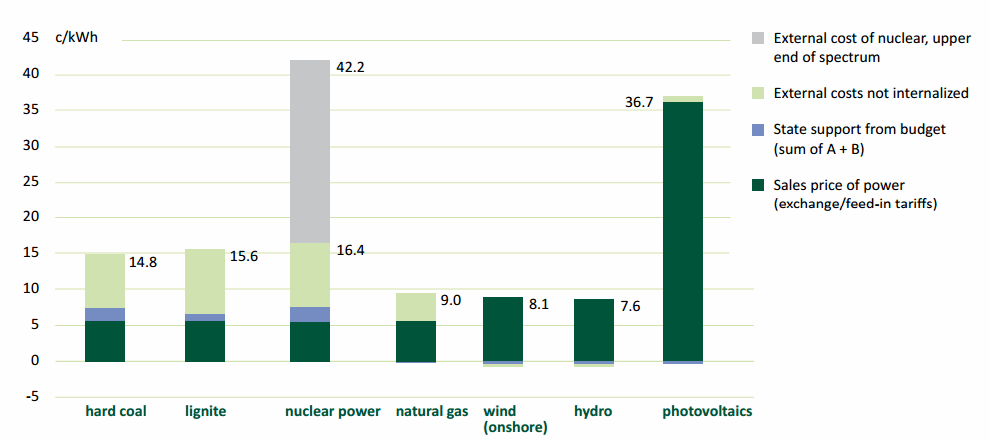Opponents of wind turbines charts that they kill tens of thousands of birds each year. How many birds died from coal plant emissions? The question is rarely asked, but Craig Morris has been following the subject for more than a decade and finds the human death toll from coal power is much bigger than the number of birds killed by wind turbines.

Though ground-mounted solar panels do take up space, they can coexist with grazing animals, as this sheep farm/solar array in Bavaria demonstrates. Image: Craig Morris
Though I have stood underneath literally hundreds of wind turbines from California to Rügen, I have never seen a dead bird under any of them, but estimates are that each turbine kills a couple of birds each year. I have, however, been sitting inside a building when a bird flew into a large window, and I have (accidentally) hit birds in my car.
Almost ten years ago to the day, I wondered why we count the birds killed by wind turbines but not by other forms of energy. There were hardly any statistics on bird deaths from coal plant emissions at the time, and we have very little today.
We do have some estimates of human beings dying from coal pollution. For instance, just this month a report from India found that more than 100,000 people died in India alone from coal plant emissions each year. That’s just the health impact, not the cost of pollution plus global warming (and you don’t want to know what global warming will cost).
In Alberta, Canada, we also have this recent estimate of “100 premature deaths” per year in the province from coal power. Alberta has roughly 3.6 million inhabitants, compared to the more than 1,200 million in India, so the equivalent figure from Alberta is around 35,000 people – a fraction of the 100,000 estimated for India.
To those wildly varying estimates not reveal how inherently uncertain such figures are? Perhaps, but as the report on India itself states, pollution standards for coal plants in India are much more lax than for North America. Furthermore, India is more densely packed than Alberta (to put it mildly) so we might expect the figures for India to be considerably greater.
If you still feel that the wildly divergent estimates seem too unreliable, then you know how I feel about estimates of bird deaths from wind turbines. As a colleague recently put it, “it would seem that wind farms aren’t much more damaging to birds than many regular human activities.”
In 2011, experts at Harvard University produced a study for the United States, and while it did not provide an estimate of the number of annual deaths, it did put a price tag on the healthcare cost of coal: $345 billion annually. In terms of each kilowatt-hour produced, an additional 18 cents would need to be added to cover these external costs, making coal power more expensive than practically everything else – including photovoltaics.

Last year, Green Budget Germany estimated (PDF) the cost of coal power including external costs and found that an additional 0.12 euros would have to be added to the price, equivalent to around 0.15 cents – not far to Harvard University’s estimate from 2011.
Make no bones about it – every technology impacts the environment. Wind turbines are visible and take up space – roughly about 30 square meters at the base. That’s about the worst thing you can say about them. Farmland and forests continue undisturbed between the turbines, and when we don’t need them anymore, we can dismantle them, recycle most of the material, and nature will quickly reconquer the small plot of land the turbines once inhabited.
Craig Morris (@PPchef) is the lead author of German Energy Transition. He directs Petite Planète and writes every workday for Renewables International.
[…] Morris recently wondered why people complain about wind mills killing birds while apparently no one ever wonders how many […]
the idea birds knocking against wind towers is totally false